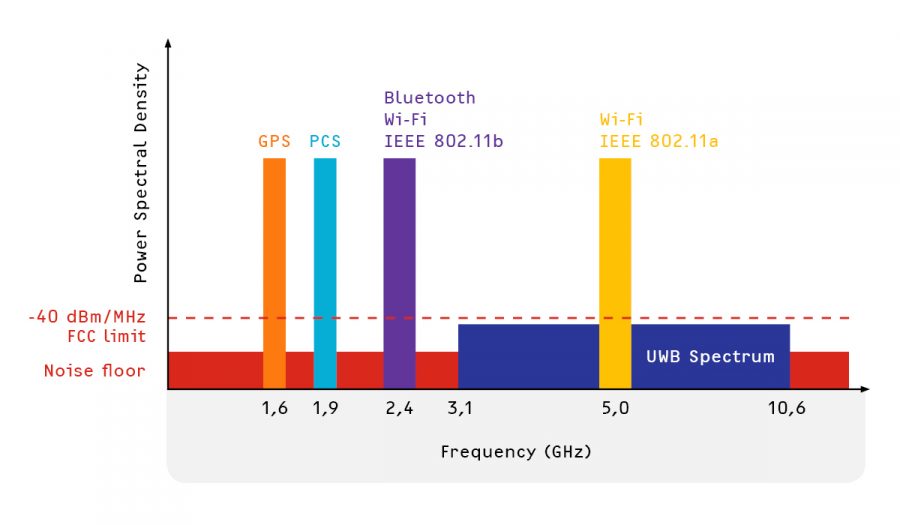Affiliate links on Android Authority may earn us a commission. Learn more.
What is UWB, and why is it in my phone? Ultra wideband technology, explained
Ultra-wideband wireless technology (UWB) has slowly grown in adoption, thanks to the rise of devices like the Apple AirTag. In a nutshell, UWB is a short-range wireless communication protocol that co-exists alongside existing standards like Wi-Fi, Bluetooth, and NFC. Don’t confuse it with Verizon’s Ultra-wideband mobile network, though — that’s a completely different 5G mmWave technology using a similar name.
UWB is a short-range wireless communication standard that's currently often used to track down the location of objects. Device trackers are the most common application of the technology, although it could also be used for secure car unlocking and smart homes in the future.
JUMP TO KEY SECTIONS
What is UWB and why should you care?
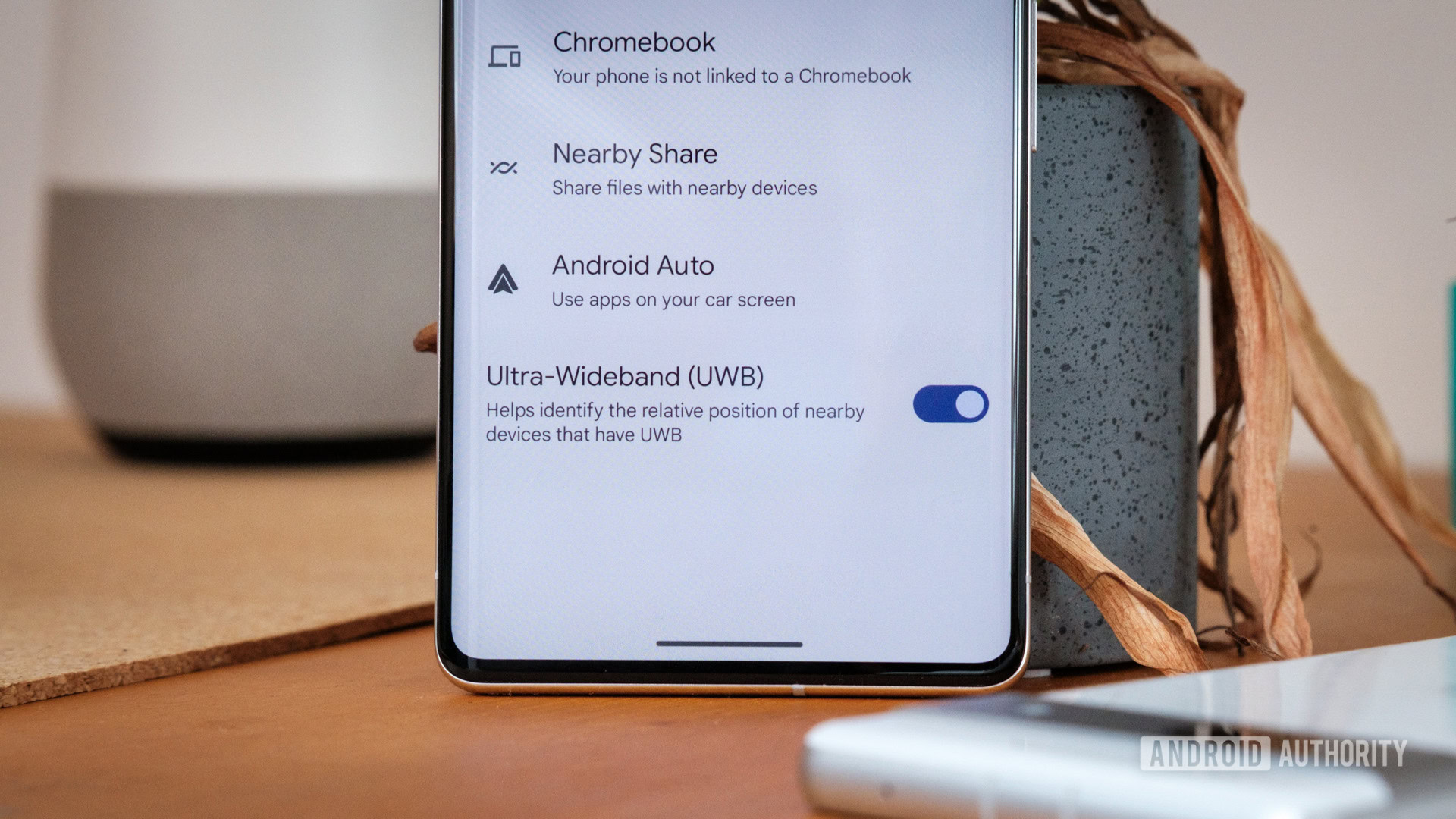
UWB stands for “ultra wideband”, a short-range wireless communication technology that enables extremely precise location tracking. A UWB-enabled device can send and receive data across short distances with incredible speed. Most often, these “pulse-based” radio waves are used to measure location by precisely timing how long it takes a radio pulse to travel between two different devices.
UWB’s main attraction comes in the form of its extremely high location and directional accuracy. UWB tracking is so accurate, in fact, that it can pinpoint an object’s location down to just a few centimeters. Bluetooth, GPS, and other tracking methods are accurate, too, but only down to a meter or two.
We’ve already seen UWB transmitters used in connected tracking devices like the Apple AirTag and Samsung Galaxy SmartTag Plus. Likewise, expect the tech to gain more prominence in the Android ecosystem with the rollout of Google’s Find My Device network.
In the automotive industry, manufacturers like BMW, Audi, Ford, and Hyundai claim that UWB-equipped devices may one day serve as a secure digital key. While various forms of keyless entry technology already exist today, the adoption of UWB will allow vehicles to measure the exact location of the fob within a few centimeters — all in real-time. This means increased security compared to other wireless standards.
Your car will be able to recognize when you are getting closer and automatically unlock, turn on its lights, or even launch preconfigured personalized settings.BMW
As we alluded to earlier, UWB chips can be embedded within devices like smartphones and smartwatches. This makes the technology appealing for convenience reasons since you don’t have to carry around a separate key fob. Samsung also envisions a future where you can unlock your front door with a UWB-enabled device or wearable with its Digital Key platform.
If you think back to how NFC-based mobile payments eliminated the need to carry around a physical credit card, it’s easy to see how UWB could prove to be similarly disruptive.
UWB Technology Facts and Stats
- UWB can accurately track an equipped object to within 3.9 inches (10 centimeters)
- Frequency: 3.1−10.6 GHz
- Speed: Linear speed of light (0.3 m/ns)
- range: 30-600 feet (10-200 meters)
- Localization accuracy: 0.1−0.5 m (0.33−1.64 feet)
- Very low vulnerability to interference
- First developed: 1960s
- Originally restricted and used only for US government and military applications
How does Ultra-Wideband technology work? Pros and cons
UWB is quite different from how other wireless data transfers work. It’s a pulse pattern radio-based technology that sends data in the time domain, with a spectrum ranging from 3.1 and 10.6 GHz. Conventional wireless transmissions vary the power, frequency, and/or phase of a sinewave to encode data, rather than simple pulses.
Ultra Wideband Technology for Precise Location Tracking
The biggest benefit of this pulse-based transfer is that it’s possible to calculate time-of-flight information from the received data. UWB can send as many as one billion pulses per second — and each of those pulses can be measured based on how long it takes the data transfer to go from one device to another.
Once you know the time taken for the signal to travel between two UWB devices, as well as the speed of the data transfer, it’s simple math to work out the distance between the transmitter and receiver. In the real world, this means UWB eliminates the risk of relay attacks, which involve intercepting and rebroadcasting radio signals to maliciously gain access to a locked vehicle. It’s a common tactic employed by car thieves.
UWB technology uses time-of-flight technology to accurately measure distance, enabling applications like secure unlocking.
If you’re thinking that it sounds a bit like sonar, at least on a very broad level, you’re kind of right. UWB technology measures the amount of time it takes for a radio wave to move between two objects, while sonar measures the amount of time it takes a sound wave to travel from its source, bounce off of an object, and return. They’re vastly different in a lot of ways — for one, Sonar doesn’t transmit data — but the basic idea is essentially the same.
UWB uses a wide portion of the spectrum to transfer data quickly…
The pulse method also takes up a lot more spectrum to work reliably, which is the reason for the ultra-wideband nomenclature. A single band is typically 500MHz wide, compared to a 5 to 20MHz 4G LTE band or 20MHz to 80MHz for WiFi (see above). Because of the wide spectrum, pulsed data can be sent very quickly without losing accuracy.
UWB can hit data rates from 4Mbps to 675Mbps or more, depending on the frequency. That’s far faster than NFC’s 424Kbps and Bluetooth’s standard 2.1Mbps speeds, but not as quick as the 2Gbps speeds achievable with Wi-Fi 6.
It doesn’t interfere with other wireless technology like Wi-Fi or Bluetooth
Typically, wireless technologies are limited to very narrow bands to avoid interfering with each other. UWB avoids this problem by operating at very low power levels that basically fall within the noise floor of other wireless applications. In other words, the spectrum is so wide that it’s easy to detect but at low enough power that it doesn’t interfere with other signals.
What is UWB used for?
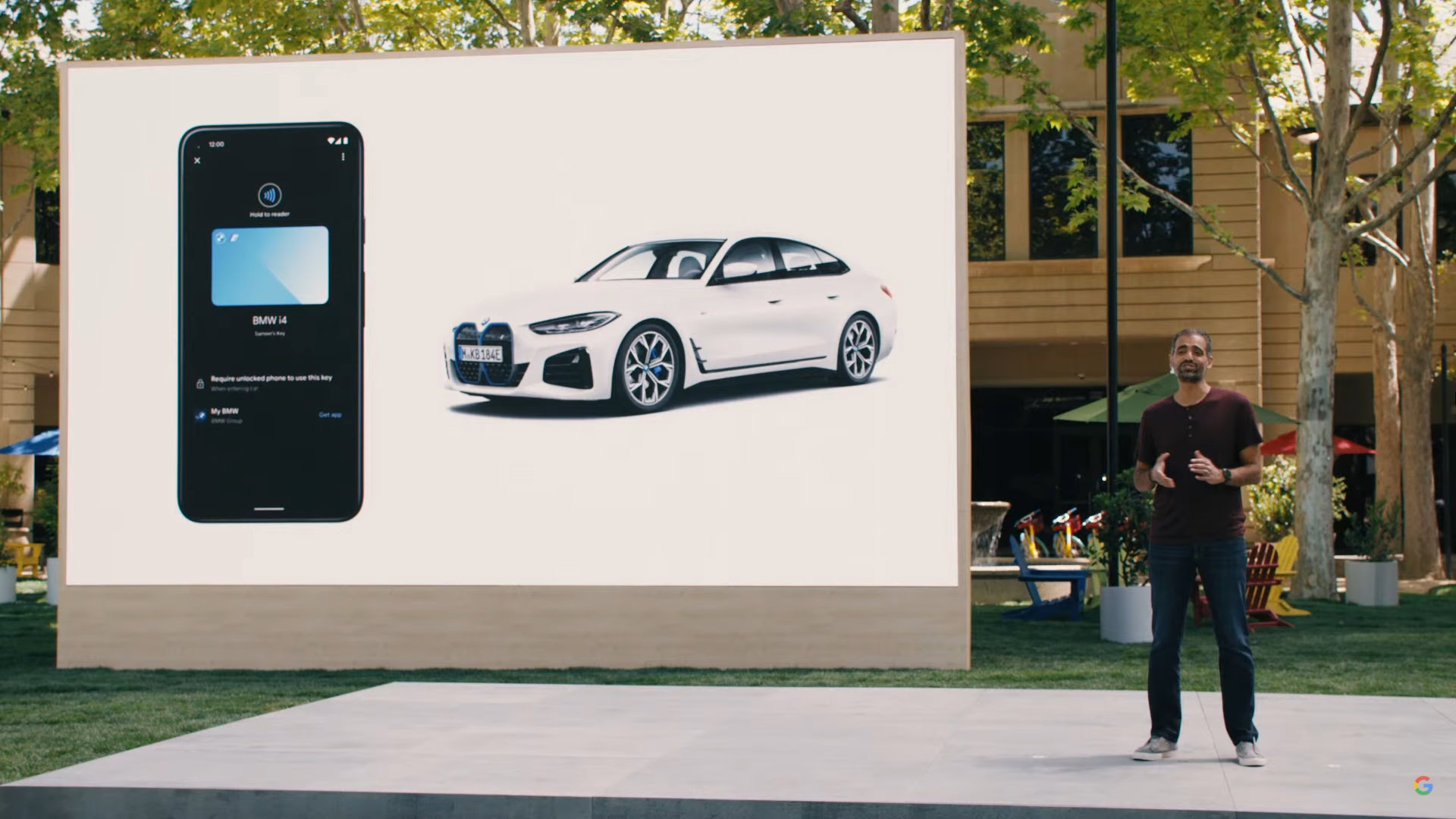
1. Secure keyless entry
While the technology has yet to be adopted by the entire automotive industry, it is being used more each year. BMW uses UWB for keyless entry in some of its newer vehicles, like the iX. One of the biggest advantages of using ultra wideband for digital keys instead of other technologies is that UWB is virtually attack-proof. While criminals can use specialized tools to break into other digitally-locked cars, they cannot do the same with cars locked using ultra wideband technology.
We’re waiting on car manufacturers to add support for Android digital car key, but the future looks bright.
2. Automation
Self-driving cars need reliable and ultra-fast sensors to ensure that they aren’t about to accidentally drive full-speed into an abandoned JC Penney. What better technology to help driverless cars “see” what’s around them than UWB, which can emit one billion pulses per second and is accurate to within a few inches?
Like many other industries, UWB has yet to be fully utilized in autonomous cars, but we expect that to change quickly. Ultra-wideband is likely to be used to provide accurate, real-time information, back and forth from one connected car to another, quickly and accurately enough that a world full of driverless cars may actually be possible.
3. Manufacturing and logistics
It may not be the sexiest application for UWB technology, but it is one of the most impactful. Because UWB signals are so accurate and reliable, they can be used to track assets in factories, warehouses, and other large industrial sites. Think about it: finding a product in a large warehouse is a lot easier when you can track its location to the centimeter.
Large companies that move hundreds of thousands of items per day (think Amazon, UPS, and others with a high focus on logistics) can benefit greatly from UWB tech. In fact, startups like Kinexon are already providing UWB devices as a solution to enterprise-scale logistics and efficiency problems.
4. Sports
Ever watched your favorite team or athlete lose a close matchup due to an officiating decision that you disagree with? Ever seen an offside penalty in a soccer game that you knew for a fact was called wrong, and it cost your team the match? Ultra-wideband will eventually make bad calls a thing of the past.
UWB is already being used in the NFL to track player locations for stats and officiating. UWB antennas are even being placed inside footballs, updating the ball’s location 2,000 times per second. Expect to see more advanced insights, officiating, and animations when you watch sports in the future, all powered by ultra-wideband.
5. Asset Tracking
Personal item trackers like the Apple AirTag use UWB technology to pinpoint the exact location of an item. Boeing also uses UWB technology to keep track of thousands of expensive tools, parts, and equipment in its factories.
These are examples of asset tracking. Using wireless tracking technology can help ensure nothing valuable goes missing again. Lost inventory and supplies are expenses that really add up, and companies like Boeing have realized that they can use UWB tracking to cut down on this.
5. Smart Homes
We love smart homes here at Android Authority, and the potential for UWB in this area is pretty awesome. Just imagine how nice it would be if your home’s lights were triggered automatically every time you walked into a room with your UWB-equipped phone in your pocket. Another cool use for UWB would be the ability to program your front door to unlock automatically when you are within 10 feet of the door — and those are just two of the dozens of ways that ultra-wideband can make smart homes even smarter.
Even better, imagine you lose your phone somewhere in your house. Instead of searching underneath every couch cushion and praying that you didn’t put your phone in the washing machine, you could simply ask Amazon Alexa where your phone is. With UWB, your digital assistant could tell you exactly where your phone was in a fraction of a second!
How is UWB Used in Smartphones?
Sports, keyless entry, and driverless cars are one thing, but what about smartphones? How is ultra-wideband being used in the world’s most essential device? Today, Apple and Samsung use the technology to allow their flagship smartphones to take full advantage of location tracking with AirTags and Galaxy Smart Tag+ devices, respectively. Ultra-wideband is also used to make file sharing over Airdrop and Nearby-share.
Outside of that, though, UWB hasn’t really been fully utilized in the smartphone market. And, UWB is only being used in a handful of smartphones — just the flagships from Google, Apple, and Samsung. Clearly, we’ve got a long way to go when it comes to universal availability.
In the future, you can expect ultra wideband to be used to help parents quickly find their kids using a secure app, help rideshare drivers easily find riders (no more awkward “where are you?” phone calls with your Uber driver), and to fuel new innovations in the world of Augmented Reality (AR). And, on top of all that, UWB-equipped smartphones will be people’s direct connection to all other UWB-equipped devices, specifically smart home devices. The future of UWB in cell phones is bright, and it’s getting closer every year.
Smartphones that support Ultra-Wideband
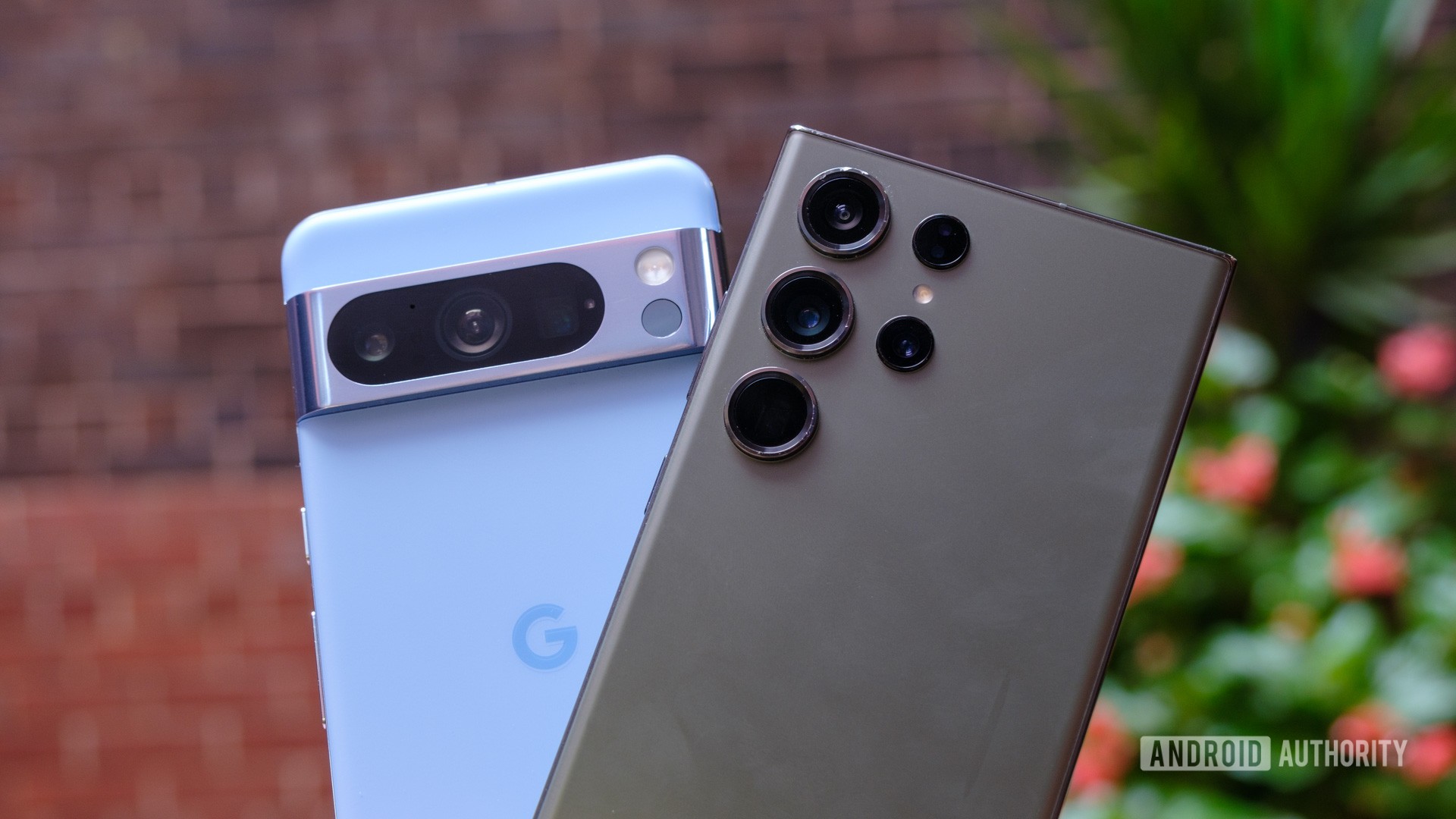
Even though ultra-wideband technology has been around for a few years, it’s not as commonplace as Wi-Fi or Bluetooth yet. It’s currently reserved for some of the most expensive devices on the market today, simply due to its limited adoption. However, you can expect that to change as the technology makes its way to mainstream vehicles and tracking devices.
For now, here’s a list of smartphones and wearable devices with support for UWB technology:
- The entire Apple iPhone 15 family as well as every model since the iPhone 11 series. The iPhone SE series does not support ultra-wideband.
- Google Pixel Fold
- Google Pixel 6 Pro, 7 Pro, 8 Pro
- Samsung Galaxy S21 Plus/Ultra, S22 Plus/Ultra, S23 Plus/Ultra, S24 Plus/Ultra
- Samsung Galaxy Note 20 Ultra
- Samsung Galaxy Z Fold 2, Z Fold 3, Z Fold 4, Z Fold 5
- Apple Watch Series 6, Series 7, Series 8, and Series 9.
We expect smartphones from other manufacturers to include support in upcoming flagship generations, but mid-tier and more affordable UWB-enabled smartphone options are still a few years away.
UWB vs NFC vs Bluetooth: What’s the difference?
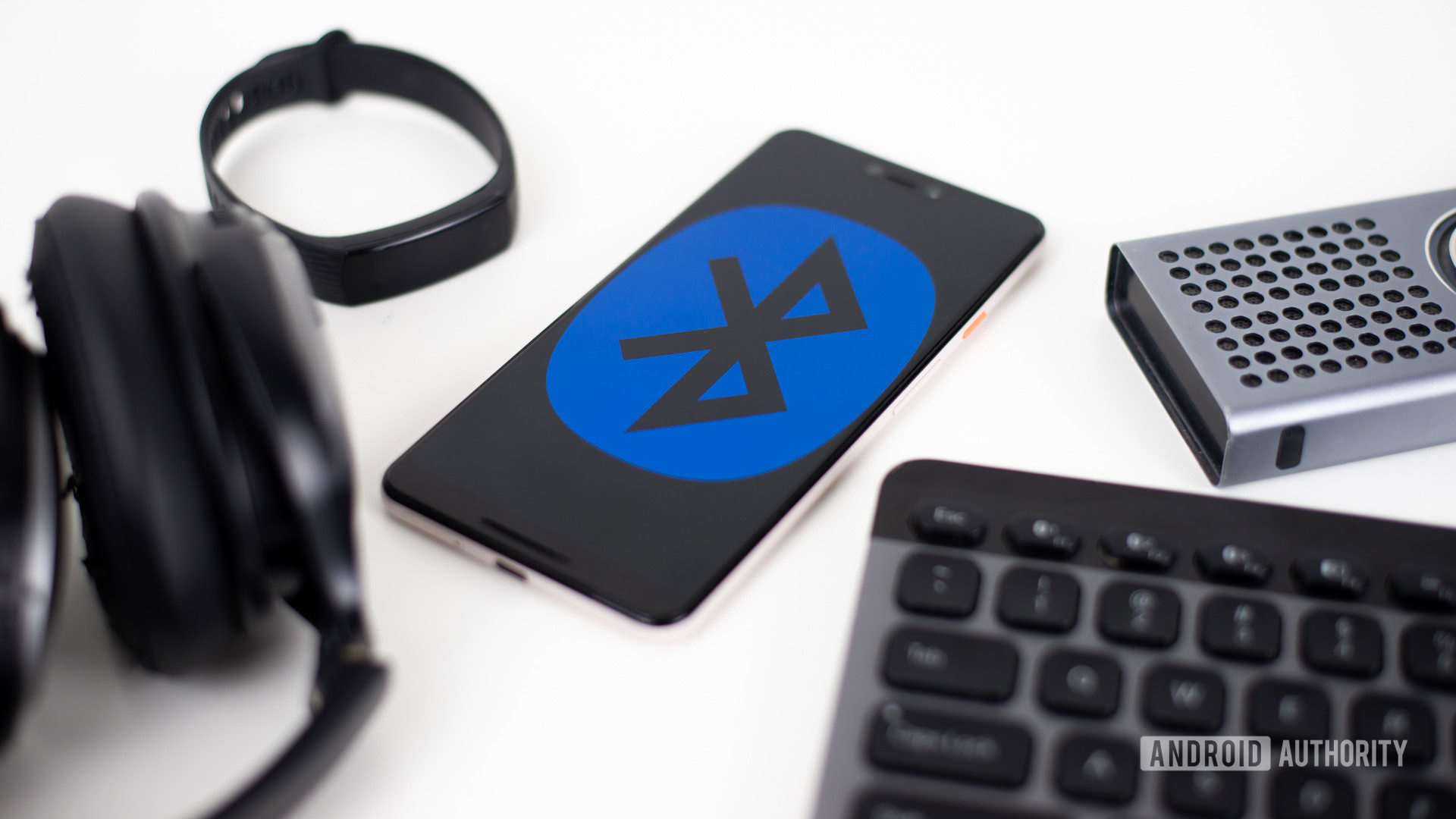
If the ultra-wideband use cases we’ve discussed so far sound familiar, it’s because many of them can already be done with existing NFC and Bluetooth technologies. Which begs the question, why bother with yet another wireless standard? What does UWB have that other wireless standards do not?
Band and Range
Bluetooth operates in the 2.4GHz band, giving it a decent range for indoor use. However, this band is in the same spectrum as some WiFi signals, making it susceptible to interference. UWB’s wide spectrum is much less prone to interference, hence its early adoption in industrial applications. That said, its range is not as long as Bluetooth’s.
UWB offers greater positional accuracy than Bluetooth and NFC, but isn't as affordable or commonplace yet.
NFC operates at 13.56MHz and most implementations require close physical proximity for data transfer. This means UWB’s transmission distance lies somewhere between that of Bluetooth and NFC. If you need long-range applications, look to GPS or Bluetooth. Short-distance applications are better served by UWB and NFC.
Cost-effectiveness: UWB isn’t as cheap as Bluetooth or NFC
Another advantage of the old tech is that NFC and Bluetooth are both inexpensive to implement, particularly for low-power beacons or passive NFC tags. UWB isn’t as cost-effective and requires an active power source. As a result, NFC isn’t going anywhere for contactless payments anytime soon. Bluetooth’s wide range of legacy support, audio functionality, and longer range means it can do a few things that UWB can’t. For existing use cases, these two options are likely to remain popular.
When is UWB the best choice?
UWB comes into its own when high-speed data transfers, fast location detection with high accuracy, and/or low risk of interference are the key requirements. As mentioned previously, the technology also works well in scenarios that require additional security, such as wireless vehicle access. Ultimately, ultra-wideband isn’t a direct replacement for any of the wireless technologies already on the market. Instead, it’s a better, more versatile choice for different use cases, even though it’s more expensive and not a “one size fits all” technology.
Are there any drawbacks to UWB?
The exceptional thing about ultra-wideband technology is that it doesn’t really have many downsides. It’s energy-efficient, versatile, cost-effective, and virtually immune to attacks and interference. That said, there are a few things about UWB that make some people think twice about its value: privacy concerns and slow adoption.
Unethical Tracking: Can UWB be used to track people without their consent?
Just like when people were concerned about stalkers using Tile, AirTags, and Galaxy SmartTag devices, there are people who have legitimate concerns about the unethical use of UWB tracking. While there are currently no examples of this tech being used to track people against their will, it’s not hard to imagine that somebody would want to try.
Stalking is the first thing that comes to mind, but there are also concerns about employees (think warehouse employees, retail workers, etc) being relentlessly tracked by management. This type of location tracking breaks several ethical (and potentially legal) barriers, and it’s not hard to envision a near future in which we need strong regulation around UWB technology.
Lack of Adoption: UWB isn’t in enough consumer devices
Though UWB is being integrated into more smartphones every year, most of the devices in people’s hands are still not equipped to transmit or receive UWB signals. This severely hampers the technology’s potential, at least for right now, in the consumer world.
What does that mean for you? Simply that, at least for right now, UWB isn’t a technology worth getting too excited about. If you work in the logistics, manufacturing, or automotive industries, you’ve got reason to be excited, but the rest of us will have to wait a bit before we see the true potential of the ultra wideband standard.
FAQ
Yes — just as with Bluetooth, wifi, and other radio-based communication standards, UWB is completely safe.
Yes, UWB signals can penetrate some walls depending on their thickness and material.
Yes — UWB has been included in every iPhone, iPhone Pro, and iPhone Pro Max since the release of the 11 series in 2019.
UWB has been around since the dawn of radio. It was first used in real-world applications by the US military, and began to be included in consumer products in the late 2010s.
UWB still works even when there are barriers separating two UWB-enabled devices; a direct “line of sight” is not required. The accuracy of location tracking does decrease; however, UWB is still more accurate than Bluetooth without a line of sight.
